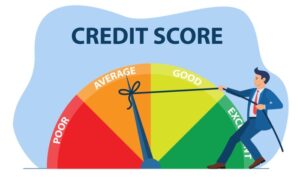Writing a Personal Finance Blog kicks off with a bang, diving into the world of finance blogging with a fresh and engaging perspective that resonates with high school hip style. Get ready to explore the ins and outs of creating a successful personal finance blog that stands out in today’s digital landscape.
Introduction to Personal Finance Blog
A personal finance blog is a platform where individuals share insights, tips, and advice on managing their money, budgeting, investing, and achieving financial goals. These blogs often cover topics like saving strategies, debt management, retirement planning, and building wealth.
Personal finance blogs play a crucial role in today’s society by empowering people to take control of their financial future. They provide valuable information that can help readers make informed decisions about their money, improve their financial literacy, and ultimately achieve financial independence.
Examples of Successful Personal Finance Blogs
- The Penny Hoarder: A popular personal finance blog that offers practical money-saving tips, side hustle ideas, and advice on how to make the most of your income.
- Mr. Money Mustache: Known for its frugality and early retirement strategies, this blog inspires readers to rethink their spending habits and prioritize financial independence.
- Financial Samurai: A blog that covers a wide range of personal finance topics, from investing and real estate to career development and wealth-building strategies.
Setting Up Your Personal Finance Blog
Starting a personal finance blog can be an exciting venture that allows you to share your knowledge and insights with others. Here are some essential steps to help you get started:
Choosing a Domain Name and Hosting Provider
When setting up your personal finance blog, choosing a domain name and hosting provider are crucial decisions that will impact your blog’s success. Here are some tips to consider:
- Choose a domain name that is easy to remember and reflects the content of your blog. Avoid using complicated or long domain names.
- Consider using s related to personal finance in your domain name to improve search engine optimization.
- Research different hosting providers to find one that offers reliable service, good customer support, and affordable pricing.
- Look for hosting providers that offer features like automatic backups, security measures, and easy-to-use website builders.
Remember, your domain name is your online identity, so choose wisely.
Selecting a Niche for Your Blog
Choosing a niche for your personal finance blog is essential to attract a specific audience and set yourself apart from other finance bloggers. Here’s why selecting a niche is important:
- Focusing on a specific niche allows you to become an expert in that area and build credibility with your readers.
- A niche helps you target a specific audience interested in the topics you cover, leading to more engaged readers and potential partnerships.
- Having a niche makes it easier to create content ideas and establish a consistent brand image for your blog.
- Consider your interests, expertise, and target audience when choosing a niche to ensure you can provide valuable and relevant content.
Content Creation for Personal Finance Blog
When it comes to creating content for your personal finance blog, there are several key areas you can focus on to provide value to your readers. It’s important to write about topics that are not only informative but also engaging to keep your audience interested.
1. Saving and Budgeting Tips
Offer practical advice on how to save money and create a budget that works for different financial goals and lifestyles.
2. Investment Strategies
Discuss different investment options such as stocks, bonds, mutual funds, and real estate, providing insights on risk management and potential returns.
3. Debt Management
Share tips on how to effectively manage and pay off debt, including strategies for consolidating loans and reducing interest rates.
4. Retirement Planning
Guide your readers on how to plan for retirement, including topics like 401(k) accounts, IRAs, and other retirement savings vehicles.
5. Financial Literacy Education, Writing a Personal Finance Blog
Provide educational content on basic financial concepts like compound interest, credit scores, and the importance of emergency funds.
6. Side Hustle Ideas
Suggest creative ways for your readers to earn extra income through side hustles or freelancing opportunities.
7. Tax Tips and Strategies
Offer advice on tax planning, deductions, credits, and other strategies to maximize tax efficiency.
8. Personal Finance Success Stories
Share inspiring stories of individuals who have achieved financial success through smart money management and discipline.
Structuring Your Blog Posts
- Start with a catchy headline and introduction to grab the reader’s attention.
- Organize your content into short paragraphs with subheadings for easy readability.
- Use bullet points or numbered lists to break down complex information.
- Incorporate relevant s for optimization without compromising the quality of your writing.
- Include visuals like charts, graphs, or infographics to enhance the understanding of complex financial concepts.
Monetization Strategies for Personal Finance Blog

Monetizing your personal finance blog is essential to turn your passion into a profitable venture. Here are some strategies to help you generate income:
Affiliate Marketing
Affiliate marketing involves promoting products or services on your blog and earning a commission for every sale made through your unique affiliate link. Here are some tips to succeed in affiliate marketing:
- Choose products/services that align with your blog’s niche and audience.
- Disclose your affiliate relationships transparently to build trust with your audience.
- Create valuable content that includes affiliate links naturally.
Sponsored Content
Sponsored content is another way to monetize your blog by partnering with brands to create content that promotes their products or services. Here are some pros and cons of sponsored content:
- Pros:
- Opportunity to earn a significant amount of income through sponsored partnerships.
- Build relationships with brands and potentially attract more sponsorship opportunities.
- Cons:
- Need to ensure sponsored content aligns with your blog’s values and doesn’t compromise your authenticity.
- Risk of alienating your audience if they feel the sponsored content is too promotional.
Building a Loyal Audience
Building a loyal audience is crucial for increasing revenue on your personal finance blog. Here are some tips to help you create a community of loyal followers:
- Consistently provide valuable and engaging content that resonates with your audience.
- Engage with your audience through comments, social media, and email newsletters.
- Offer exclusive content or perks to loyal readers to incentivize them to stay connected.
Building a Community Around Your Personal Finance Blog
Building a community around your personal finance blog is crucial for its success. Engaging with your readers and networking with other personal finance bloggers can help you grow your audience and establish credibility in the finance niche.
Tips on Engaging with Your Readers
- Respond to comments: Take the time to reply to comments on your blog posts to show your readers that you value their input.
- Create interactive content: Encourage discussions by asking questions or creating polls within your blog posts.
- Host live Q&A sessions: Schedule live sessions where your readers can ask you questions in real-time.
Importance of Networking with Other Personal Finance Bloggers
- Collaborate on guest posts: Partner with other personal finance bloggers to reach a wider audience and share valuable insights.
- Attend industry events: Network with other bloggers at finance conferences or meetups to build relationships and exchange ideas.
- Join online communities: Participate in online forums or Facebook groups for personal finance bloggers to connect with like-minded individuals.
Successful Community-Building Strategies
- Create a dedicated community page: Build a forum or group where your readers can engage with each other and share resources.
- Organize contests or challenges: Encourage participation by hosting contests or challenges related to personal finance topics.
- Showcase reader success stories: Share stories of your readers’ financial achievements to inspire others and foster a sense of community.
Legal and Ethical Considerations for Personal Finance Bloggers: Writing A Personal Finance Blog

When running a personal finance blog, it’s crucial to adhere to legal and ethical standards to maintain trust with your audience and protect your content.
Disclosure of Affiliate Relationships and Sponsored Content
It’s essential to be transparent about any affiliate relationships or sponsored content on your blog. This includes clearly disclosing when you are receiving compensation for promoting certain products or services.
- Always disclose any affiliate links in your blog posts or social media promotions.
- Clearly label sponsored content as such to avoid misleading your audience.
- Follow FTC guidelines on disclosure to ensure compliance with regulations.
Legal Implications of Providing Financial Advice on a Blog
Providing financial advice on your blog can have legal implications, as you may be held accountable for any misinformation or advice that leads to financial loss for your readers.
- Avoid making specific investment recommendations without proper qualifications or certifications.
- Clearly state that your advice is for informational purposes only and encourage readers to consult with a professional financial advisor.
- Consider obtaining liability insurance to protect yourself from potential legal actions related to your financial advice.
Tips on Protecting Your Blog Content and Intellectual Property
Protecting your blog content and intellectual property is essential to safeguard your work from plagiarism and unauthorized use.
- Consider copyrighting your original content to establish legal ownership and protection.
- Use watermarks on images to prevent unauthorized use or distribution.
- Regularly monitor your content for plagiarism and take necessary action if infringement occurs.



